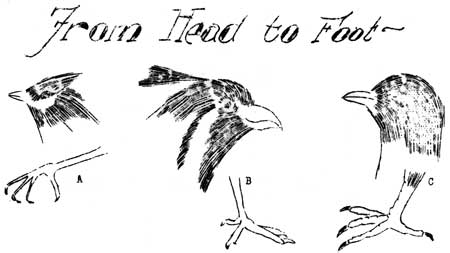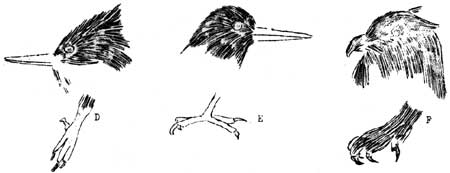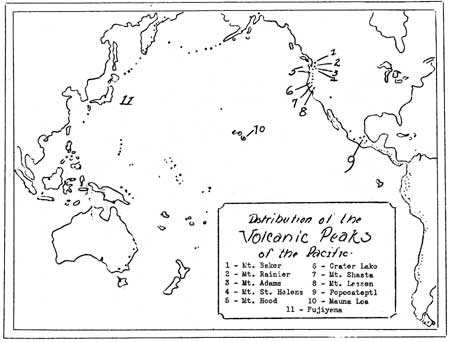
Variation in form and structure of birds are based upon very
practical reasons. The beaks and feet of birds give particular evidence
of this and serve as a key to their habits. In the Cedar Waxwing (A)
one finds a beak of general utility pattern and a typical perching foot.
The Quail (B) has a beak designed for browsing while, being a ground
bird, its feet serve for walking and are developed for that purpose.
The Pigeon (C) also spends considerable time on the ground and so it,
too, has ground feet but its beak does not serve for cracking seeds or
catching insects as the Pigeon feeds upon seeds picked up from the
ground and swallowed whole. The long slender spearing beak of the
Kingfisher (D) is admirably suited for its purpose and its feet, while
serving the purpose of this perching bird is also constructed for
digging as well. The Woodpecker's (E) beak is square at the end like a
chisel for obvious reasons and its feet are such that they serve as a
climbing tool; and all flesh eating birds (F) have strong, hooked beaks
for tearing their prey and talons that grasp and hold the victim.

DISTRIBUTION OF THE VOLCANIC PEAKS OF THE PACIFIC

Click on the above image for an enlargement.
(~63K)

